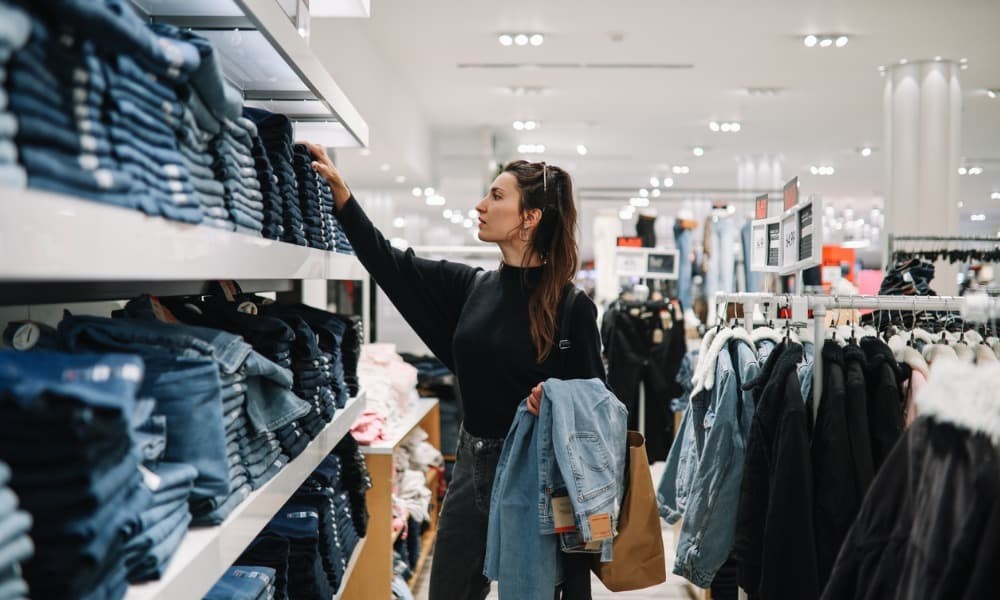In today’s highly competitive retail environment, the design and layout of a store play a crucial role in attracting customers and driving sales. Shopfitting services focus on optimizing retail spaces to create visually appealing, functional environments that enhance the customer experience and maximize sales opportunities. At Signworks, a 3D printing service provider, we’ve collaborated with businesses that incorporate custom-designed fixtures and millworks to elevate their retail spaces. This article explores the key elements of shopfitting, the importance of design in improving user flow, and how well-executed shopfitting projects can lead to increased sales.
Introduction to Shopfitting and Its Importance in Retail
Shopfitting involves the planning, designing, and installation of furniture, fixtures, and fittings in retail spaces. It’s much more than just arranging shelves and displays—shopfitting ensures that every element works together to create a seamless shopping experience for customers.
Retailers across industries invest in shopfitting to:
- Create visually appealing spaces that align with their brand identity.
- Enhance customer engagement by guiding shoppers through the store effectively.
- Maximize space utilization to display products efficiently and promote high-margin items.
An optimized retail environment is key to driving foot traffic, increasing customer satisfaction, and boosting sales.
Key Elements of Shopfitting: Layout Design, Lighting, Furniture, and Signage
To create an engaging and functional retail space, shopfitting focuses on several critical elements:
- Layout Design
- A well-planned store layout determines the flow of customers through the space.
- Popular layouts include grid layouts for grocery stores, loop layouts for large retailers, and freeform layouts for boutiques.
- Strategic placement of high-demand products and promotional items encourages impulse purchases.
- Lighting
- Proper lighting plays a vital role in setting the ambiance and guiding customer attention.
- Spotlights highlight key products, while ambient lighting creates a welcoming environment.
- LED lighting is commonly used for its energy efficiency and versatility in creating dynamic lighting schemes.
- Furniture and Fixtures
- Custom-designed furniture and shelving maximize the use of space and align with the brand’s aesthetic.
- Modular fixtures offer flexibility, allowing retailers to reconfigure displays easily for new collections or seasonal events.
- Incorporating ergonomically designed furniture improves comfort for both customers and employees.
- Signage
- Clear signage ensures easy navigation and enhances the customer journey within the store.
- Digital signage is increasingly popular for displaying promotions, announcements, and interactive content.
- Branded signage reinforces brand identity and creates a cohesive shopping experience.
The Importance of User Flow and Customer Experience in Shop Design
User flow refers to the path that customers naturally follow through a store. A well-planned shopfitting project ensures that this flow is optimized to:
- Encourage customers to explore the entire store, increasing their exposure to products.
- Minimize bottlenecks and reduce overcrowding in popular sections.
- Lead customers toward checkout areas smoothly, preventing frustration.
Enhancing the customer experience through smart shop design can result in:
- Longer shopping times, increasing the likelihood of additional purchases.
- Improved customer satisfaction and brand loyalty.
- Positive word-of-mouth and higher return visits.
Example: IKEA’s store layout is specifically designed to lead customers through a predetermined path, ensuring exposure to a wide range of products, from furniture to small accessories.
How Custom Millworks Enhance Store Aesthetics
Millworks services involve creating custom woodwork elements such as cabinets, shelving, and furniture. Incorporating custom millworks into shopfitting projects offers several benefits:
- Unique store aesthetics: Tailored woodwork adds character and differentiates the store from competitors.
- Seamless integration: Custom millworks ensure that furniture and fixtures align perfectly with the store’s theme and layout.
- Sustainability: Using reclaimed or sustainable wood materials aligns with eco-conscious retail practices.
Example: High-end retailers like Apple use custom millwork elements to create minimalist, sophisticated interiors that enhance their brand’s premium image.
Examples of Successful Shopfitting Projects and Their Impact on Sales
Several leading retailers have successfully transformed their stores through well-executed shopfitting projects, resulting in increased foot traffic and higher sales.
- Nike’s Flagship Store in New York
- Nike’s innovative retail space combines digital elements with creative layouts, allowing customers to interact with products and customize their shopping experience.
- Impact: Nike reported increased in-store traffic and higher conversion rates after redesigning their retail spaces.
- Starbucks’ Store Redesigns with Localized Themes
- Starbucks uses unique store designs that incorporate local art and materials to connect with communities.
- Impact: The personalized design approach has led to increased customer satisfaction and loyalty.
- Primark’s Multi-Floor Retail Experience
- Primark’s multi-level stores are designed with clear signage, engaging displays, and well-placed checkouts to enhance the shopping journey.
- Impact: Primark has seen increased dwell time and higher average basket sizes due to its strategic store layout.
Conclusion: The Role of Shopfitting in Boosting Retail Sales
Effective shopfitting is not just about creating visually appealing stores—it’s about optimizing every aspect of the retail space to enhance the customer experience and drive sales. From layout design and lighting to custom millworks and signage, every element plays a crucial role in shaping how customers interact with a brand.
By investing in professional shopfitting services, retailers can create environments that attract more customers, increase satisfaction, and boost profitability. At 3D printing company, we collaborate with retailers to integrate custom designs, ensuring that every project aligns with the brand’s identity and market goals.
FAQs
- How does shopfitting affect retail sales?
- Shopfitting improves store layout, lighting, and furniture placement, enhancing customer experience and encouraging longer shopping times and impulse purchases, leading to higher sales.
- What role does millwork play in retail design?
- Millwork provides custom furniture and fixtures that align with the store’s aesthetic, creating a unique shopping environment that reinforces the brand’s identity and appeals to customers.
With the right shopfitting strategy, retail spaces can transform from ordinary stores into immersive experiences that drive customer loyalty and boost sales.












